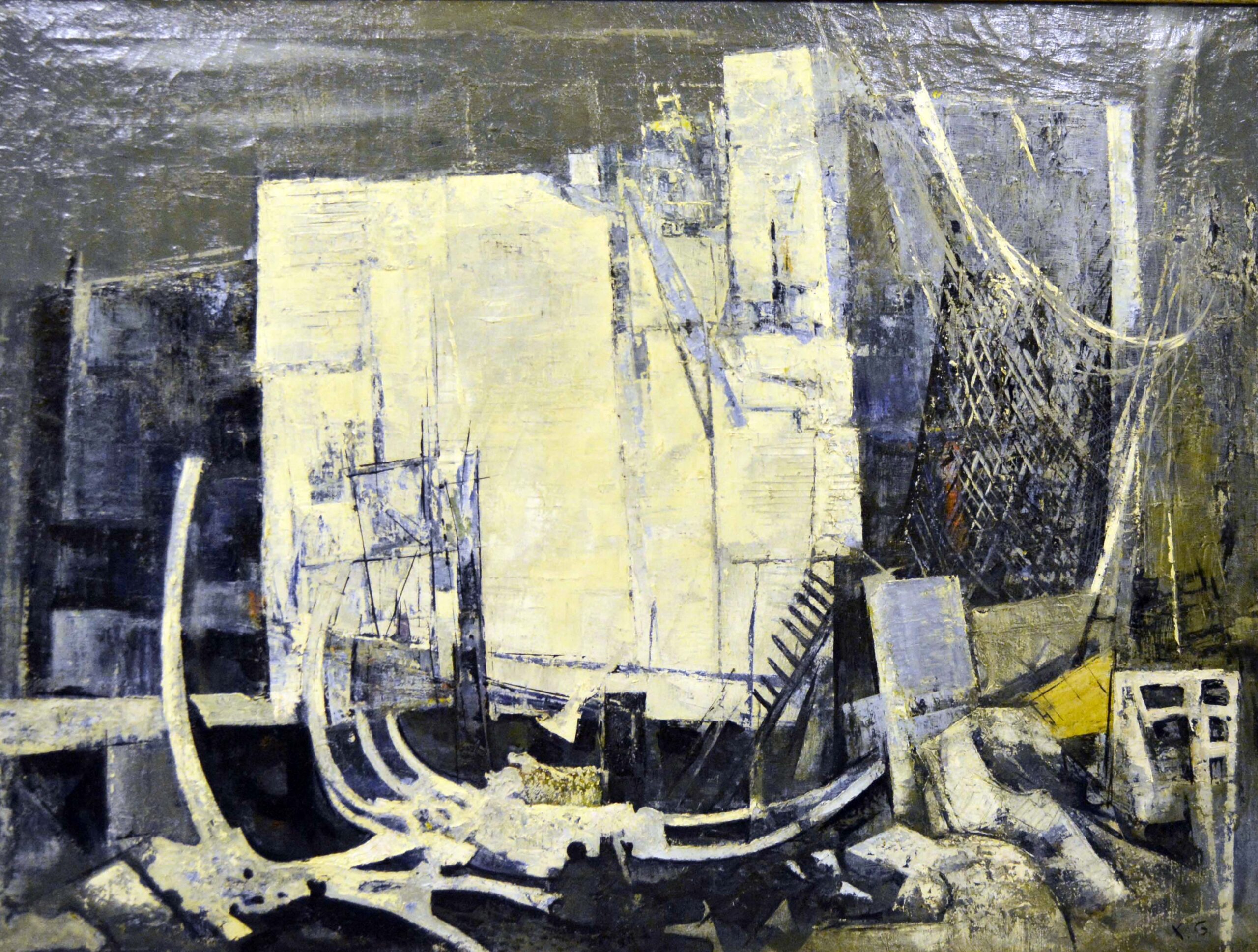Xavier González
(American, 1898-1993)
Ice House, c. 1945
Oil on canvas; 30 x 40 inches
Gift of Linda and William Reaves, The Linda and William Reaves Collection of Texas Art at UHV, 2022
Compositionally dense and seemingly impenetrable, Ice House is a restless, irritable cubist abstraction. Its webs, cubes, and horns collide and harmonize with one another like a Rube Goldberg machine in disrepair. Together, these abstract shapes imply meaning and intentionality, but they convey no signs of movement or life. The composition is ordered and still. It is a carcass, a warworn, desolate city center. Yet, there is balance in the wreckage. It is stylized carnage, dystopian and surreal. A sense of quiet desperation and stagnation radiates from the canvas. Immediately accessible humanity is absent. There are no figures, faces, human creations, or direct representations of nature. Through careful abstraction, González constructs a scene of obscured humanity or humanity in hiding.
Born on February 15, 1898, in Almeria, Spain, Xavier González grew up in Argentina and Mexico. In his late teens and early twenties, González traveled widely throughout Latin America with his father, an agricultural expert. He studied mechanical engineering in Mexico City. In 1922, González left to the United States, to work for a railroad in Iowa. He then settled down in Chicago, where he studied at the Art Institute of Chicago. After completing his studies, González left for San Antonio in 1925 where he taught in the public school system. In 1931, he earned a faculty position at Sophie Newcomb College in New Orleans. During the 1930s, he divided his time between New Orleans and Alpine, Texas, where González ran an artists’ colony. During World War II, González was employed by the Department of the Navy as a cartographer and posters designer. In the 1940s, González left for New York. He spent the remainder of his career teaching at the Arts Student League and the Brooklyn Museum. He also operated a summer art school in Wellfleet, Massachusetts. His works are in the collections of many museums, including the Metropolitan Museum of Art, the Witte Museum, the Whitney Museum of American Art, the Museum of Fine Arts in Boston, and the Dallas Museum of Art.
Location
University of Houston-Victoria
STEM Building
